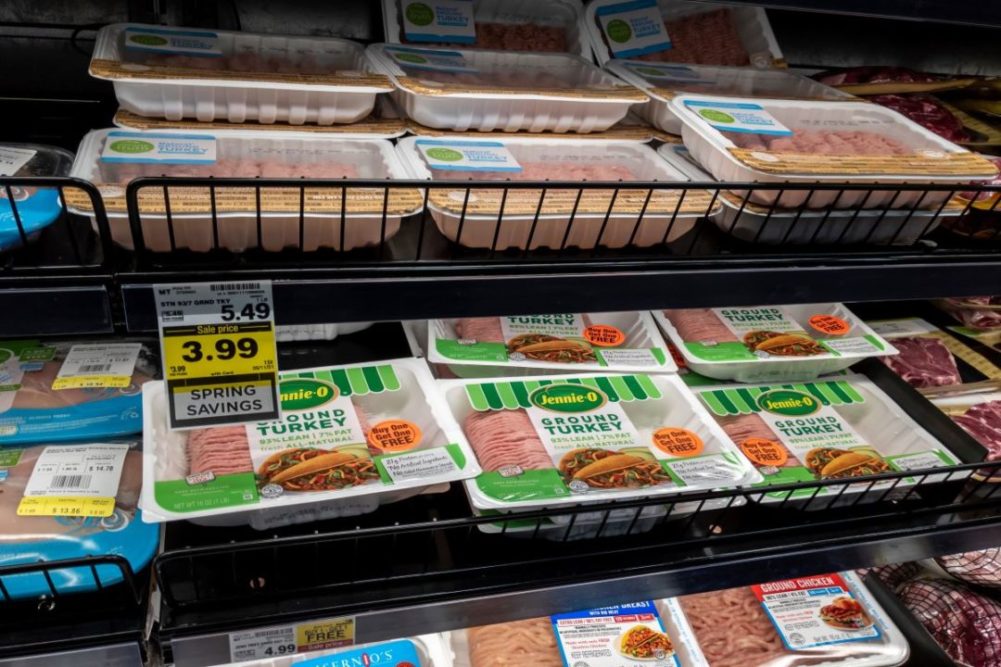AUSTIN, MINN. — Hormel Foods Corp. will increase advertising spend on its turkey portfolio in fiscal 2023 after raising prices in fiscal 2022. Highly pathogenic avian influenza (HPAI) should continue to impact the turkey category negatively in the next fiscal year, but to what degree remains unknown.
“We expect a recovery in turkey volumes in the back half of the year, allowing our teams to continue to create a demand-oriented and optimized turkey portfolio,” said James P. Snee, president and chief executive officer of Hormel, in a Nov. 30 earnings call to discuss results for the fiscal year ended Oct. 30. “This is heavily dependent on any future impacts to the supply chain from HPAI. We expect that the pricing actions taken over the past few quarters should result in a benefit to net sales in fiscal 2023.
“However, we have also accounted for additional impacts from elasticities as these new pricing actions are adopted in the marketplace. To help mitigate risk to our retail volumes, we plan to increase advertising and brand investment, make further progress on our efforts to continue to improve fill rates, and return to full assortments across our leading platforms.”
When HPAI reemerged this fall, it affected the company’s vertically integrated supply chain by about one-third of the magnitude of the spring HPAI emergence, he said.
Net earnings attributable to Austin-based Hormel Foods in the fiscal year were $999.99 million, equal to $1.84 per share on the common stock, which was up 10% from $908.8 million, or $1.68 per share, in the previous fiscal year.
“The team overcame broad-based inflationary pressures, supply chain disruptions, the impacts from highly pathogenic avian influenza or HPAI, and numerous headwinds in our international business,” Snee said.
Net sales of $12.46 billion in the fiscal year were up 9% from $11.39 billion. Organic net sales, excluding the partial-year impact of the Planters snack nuts business and an additional week in fiscal 2021, rose 6%.
In the company’s grocery products segment, sales rose 26% to $3.53 billion from $2.81 billion. Segment profit fell 3.8% to $367.6 million from $382.2 million. In refrigerated foods, sales rose 6% to $6.69 billion from $6.33 billion. Segment profit increased 3.1% to $685.4 million from $664.6 million.
In the Jennie-O Turkey Store segment, sales increased 0.8% to $1.51 billion from $1.5 billion. Operating profit jumped 188% to $218.9 million from $76 million. Hormel in fiscal 2023 will leverage Jennie-O and Planters with the goal of making further gains in the convenience store and K-12 school channels, Snee said.
In international and other, sales dipped 2.8% to $727 million from $784.2 million. Segment profit fell 9% to $105.3 million from $115.9 million.
“Our international business had a challenging year in 2022, but we expect a strong return to growth in fiscal 2023,” Snee said. “Demand for our products globally is robust, and our production capabilities and inventory levels are healthy to support this demand. We believe that many of the export challenges we experienced this past year will gradually subside.”
In the fourth quarter, net earnings attributable to Hormel Foods Corp. were $279.9 million, or 51¢ per share on the common stock, down 0.7% from $281.7 million, or 52¢ per share, in the previous year’s fourth quarter. Sales dipped 5% to $3.28 billion from $3.45 billion, Organic net sales, excluding the impact of an additional week in the previous year’s fourth quarter, rose 2%.
Hormel Foods on Oct. 31 began operating under three operating segments: retail, foodservice and international. The company in fiscal 2023 expects net sales in a range of $12.6 billion to $12.9 billion, which would be an increase in a range of 1% to 3%.
“From our overall bottom-line perspective, we anticipate earnings growth to be driven by our foodservice and international segments and improvements across the supply chain,” Snee said. “We expect to operate in a volatile, complex and high-cost environment again in fiscal 2023, which is why we are increasingly focused on reducing costs and inefficiencies as part of our one supply chain initiative.”

